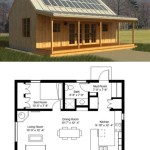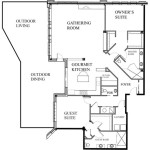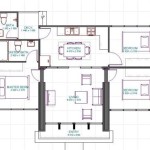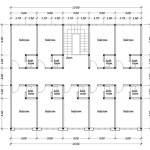Essential Aspects of Drawing a House Plan
Creating a house plan is a crucial step in the construction process. It serves as a blueprint for the entire project, guiding every aspect of the building's design and construction. To ensure a successful outcome, it is essential to consider key elements when drawing a house plan. This article explores the vital aspects to focus on to create a comprehensive and effective plan.
1. Defining the Purpose and Scope
The first step in drawing a house plan is to clearly define the purpose and scope of the project. This includes determining the intended use of the house and the specific requirements of the occupants. Factors to consider include the number of bedrooms and bathrooms, the need for specific rooms such as a study or home office, and any special accessibility requirements.
2. Establishing the Site Context
The site context plays a crucial role in the design of the house. It is essential to thoroughly understand the topography, orientation, and any existing structures or natural features on the property. This information will inform decisions about the placement of the house on the site, as well as the design of the exterior and interior spaces.
3. Planning the Floor Plan
The floor plan is the heart of the house plan, determining the layout of the rooms and the flow of movement throughout the house. Careful consideration should be given to the size, shape, and arrangement of each room, as well as the placement of windows, doors, and stairs. It is essential to ensure that the floor plan is functional, efficient, and meets the specific needs of the occupants.
4. Designing the Exterior
The exterior of the house is responsible for creating the overall impression of the property. The architectural style, materials, and finishes should be carefully chosen to complement the surrounding environment and reflect the desired aesthetic. Factors to consider include the roofline, windows, siding, and landscaping.
5. Incorporating Systems and Features
A house plan must include detailed drawings of the mechanical, electrical, and plumbing systems. These systems are critical to the functionality and comfort of the house, and their design and installation should be carefully considered. Additionally, the plan should incorporate features such as fireplaces, built-in storage, and energy-efficient appliances.
6. Addressing Building Codes and Regulations
It is essential to ensure that the house plan complies with applicable building codes and regulations. These regulations may vary depending on the location and jurisdiction. They cover aspects such as structural safety, energy efficiency, accessibility, and fire safety. Compliance with these codes ensures that the house is built to a safe and habitable standard.
7. Creating a Detailed Site Plan
In addition to the house plan, a site plan is also necessary. This plan shows the location of the house on the property, as well as driveways, walkways, patios, decks, and any other outdoor structures or features. The site plan provides a comprehensive overview of the entire property and how the house relates to its surroundings.
Conclusion
Drawing a house plan requires careful consideration of numerous essential aspects. By focusing on the purpose and scope of the project, establishing the site context, planning the floor plan, designing the exterior, incorporating systems and features, addressing building codes and regulations, and creating a detailed site plan, you can create a comprehensive and effective plan that will guide the successful construction of your dream home.

Floor Plan Creator And Designer Free Easy App

Draw Floor Plans In Half The Time Cedreo

Draw Floor Plans With The Roomsketcher App

Easy Home Building Floor Plan Cad Pro

Example Of House Plan Drawing Scientific Diagram
House Plan Drawing App On Google Play

How To Draw A Floor Plan By Hand Step Guide

How To Draw A Floor Plan The Simple 7 Step Guide For 2024

House Plan Drawing Everything You Need To Know

Draw Floor Plans With The Roomsketcher App








